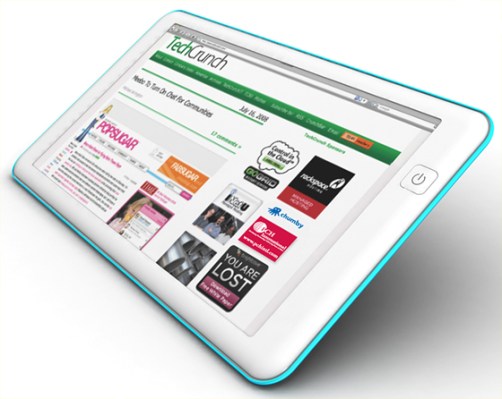Back in the Summer of 2008, when there was still a glimmer of innocence and belief in the fundamental goodness of people in this young blogger’s mind, I decided that I wanted a touchscreen tablet. Something like the screen side of a Macbook Air, plus a touch screen. It would mostly be for “couch” computing, I said. although I also meant “bathroom” computing. Here’s that post, titled We Want A Dead Simple Web Tablet For $200. Help Us Build It.
At the time there was no iPad, or hope of one. Apple had ditched the idea, we’d heard, after unsatisfactory testing of a device with employees. So our choices where hugely expensive and near-useless tablets like the Dell Latitude XT. Meh.
So we jumped in headfirst into building what we eventually called the CrunchPad. That project turned into a trainwreck and the lawsuit is just finally getting ready to go to trial.
But one thing I was very right on is the huge demand for a less expensive tablet computer, even in today’s iPad world. HP’s sale of the TouchPad for $100 just confirms this – people will buy millions and millions of these things even if it doesn’t have an Apple logo on it.
HP certainly can’t spend $318 to build a TouchPad and then sell it for $100. But HP (or someone) could build a perfectly awesome capacitive touch screen tablet running on decent hardware for less than $200. We worked with enough factories in Taiwan to understand that. Our cost estimate for a great touch screen was in the $60 range, for both the module and the LCD. HP’s super awesome display is costing them more than twice that. They’re also spending $50 on memory, something we were mostly leaving out (storage? Cloud.).
If HP were to knock the screen quality down just a bit and figure out a cheaper storage solution, the BOM (bill of materials) on their device could be significantly lower than $200. Normally they’d retail that at $400 or more. But if instead they sold it for cost, and sold millions of them, a very robust developer network would pop up around WebOS. See Apple and Google for great ideas on monetizing apps on devices by grabbing up to 30% of revenues and also trying to control app advertising.
HP tried to build an iPad killer and they failed just like everyone knew they would. No one challenges Apple head on in a computer fight and wins. But if they had sold a much cheaper tablet they would have (as we see now) nearly unlimited demand for those tablets.
I say to HP – KEEP MAKING TOUCHPADS, as fast as you can. See what the demand curve looks like at $200, and watch the app developers suddenly get crazy excited about WebOS again. You may have a huge hit on your hands, and a bunch of lemonade from all those lemons.
Or perhaps some enterprising young factory or two in China will figure out an inexpensive device and license WebOS from HP. Either or is fine with me. But as long as Google keeps trying to match Apple on features and price, there’s a huge gaping hole filled with unmet demand for a tablet computer that you can use to look up stuff on Wikipedia while you’re watching tv, and maybe check emails during commercials. America is a couch culture. Embrace it, HP. Embrace it.
